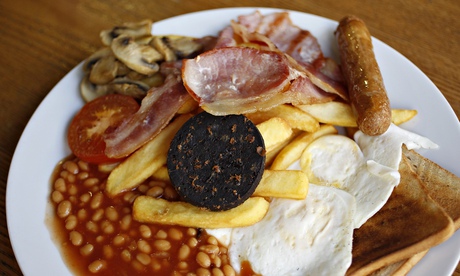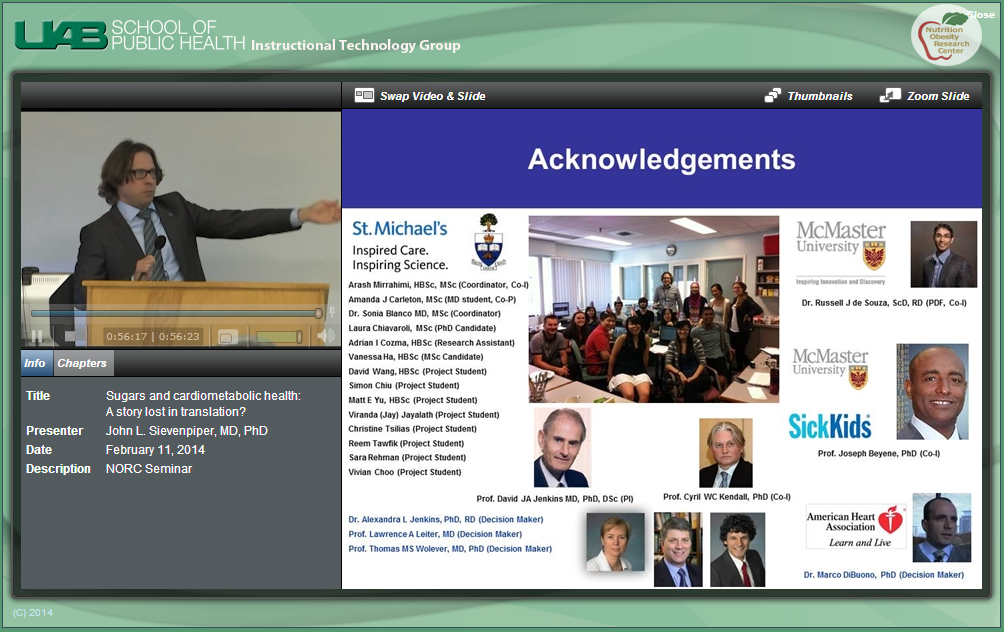A tale of public health advocates double-crossed by big food. Not for the first time, nor will it be the last…
In a sense, this is a battle between altruism and profit. Hardly a fair fight really?
http://www.abc.net.au/radionational/programs/backgroundbriefing/2014-03-30/5350092
Big food fight continues after Senator Fiona Nash controversy
- Sunday 30 March 2014 8:05AM
 IMAGE: A SIMPLE STAR RATING SYSTEM FOR PROCESSED FOOD HAS KICKED OFF A POLITICAL FIRESTORM. (BLEND IMAGES/DAVE AND LES JACOBS/GETTY IMAGES)
IMAGE: A SIMPLE STAR RATING SYSTEM FOR PROCESSED FOOD HAS KICKED OFF A POLITICAL FIRESTORM. (BLEND IMAGES/DAVE AND LES JACOBS/GETTY IMAGES)
The controversy surrounding a plan to put nutrition rating labels on processed foods has already claimed the job of the Assistant Minister for Health’s chief of staff. The stoush has revealed the deep links between ‘big food’ and the government, writes Ann Arnold.
Related story: RN Breakfast report (6 mins)
It sounds innocuous enough—a plan to have clear labelling about the health qualities of processed foods, so that consumers have a better sense of what they’re buying.
But a system that would see star ratings on the front of most edible items on supermarket shelves hit a spectacular hurdle in Parliament House last month.
In what became one of the biggest parliamentary stoushes so far this year, Senator Fiona Nash was forced to defend her chief of staff, Alastair Furnival, after he rang the Department of Health and ordered it to take down a new website that was to be part of the health star ratings system.
We put in a huge amount of time and effort, and did it in good faith, and dealt with this particular section of industry in good faith. Now we see a turning away from that and the use of that standard political tactic when you don’t want something to happen, of delay.
MICHAEL MOORE, AUSTRALIAN PUBLIC HEALTH ASSOCIATION CEO
Alastair Furnival was quickly exposed as a lobbyist for the food industry who had not resigned as a director from his lobbying company, Australian Public Affairs, nor sold his half share in it, while he worked for the Assistant Minister for Health. He subsequently resigned from his job and Senator Nash was censured in the Senate by Labor and the Greens for misleading Parliament.
That whole episode, however, was just the tip of an iceberg. For two years there has been a battle fought out over front of pack labelling. It’s a tale of industry and political connections, expectations dashed and influence wielded.
In one camp are health and consumer advocates concerned about the fact that diet-related illness—or dietary risk—is now the leading cause of death in the world.
In the other camp are some sectors of the food industry: mainly the larger, multinational companies, or ‘big food’, who say the expense of changing their packaging is onerous and business should not have to bear the brunt of it.
The traditionally warring groups were brought together by the federal Labor government in 2012 to thrash out a new labelling system. It was a revolutionary move. Food enemies were sitting at the same table.
Michael Moore, chief executive officer of the Australian Public Health Association, recalls: ‘Actually at the start of the process I think there was quite a lot of trepidation. As the process went on through the first year, I think we all grew in confidence, a great deal of confidence, because we really were working hard to try and find a compromise that would work.
‘When we came up with the star labelling system, because it works on white goods, because it works on movies, because it works on hotels, it would be easy to understand. It would give an overview of the healthiness of the food. I think our optimism grew.’
Soon, his view would change. The Australian Food and Grocery Council, the powerful peak body for the manufactured food industry, had been involved in developing the scheme.
But around the middle of last year, the council started to publicly criticise it. Various anomalies were raised about how particular foods were rated—issues which Mr Moore said were being dealt with by the committees in which the council was represented.
The AFGC also wanted a cost benefit analysis, and ‘more work’ to be done.
Mr Moore told Background Briefing he felt betrayed. ‘We put in a huge amount of time and effort, and did it in good faith, and dealt with this particular section of industry in good faith. Now we see a turning away from that and the use of that standard political tactic when you don’t want something to happen, of delay.’
How does he feel about that whole process now? ‘Oh well, shafted of course.’
This article represents part of a larger Background Briefing investigation. Listen to Ann Arnold’s full report on Sunday at 8.05 am or use the podcast links above after broadcast
The apparent change of heart by the AFGC came after a meeting in June last year of the nation’s health ministers, which, by vote, approved the star rating system. Big business was spooked by the health ministers’ surprise decision to make the voluntary system mandatory within two years if not enough companies had taken it up.
In an interview recorded by ABC TV’s 7.30 in February, Gary Dawson, the AFGC’s CEO, said: ‘It’s a voluntary start up, but it’s a clear threat to force this on food companies from June next year. That’s written up in the decision and so the cost impact is real.’
Processed food is Australia’s largest manufacturing industry, and it’s growing. A Deloitte report released this week forecasts food processing as one of the future growth waves for Australia. Although hit at the moment by a strong Australian dollar, it is poised to make a big impact on the Asian market.
‘We know it [health star labelling] will cost individual companies millions of dollars and of course the industry; we’d estimate around $200 million industry-wide,’ Mr Dawson said.
‘So it’s a significant cost, particularly on an industry that’s in a financial squeeze at the moment. Profits are declining. Companies like SPC or Simplot can hardly afford spending millions of dollars on a scheme where the benefits are far from well understood or proven.’
The managing director of Simplot Australia is Terry O’Brien, who became the chair of the AFGC in February last year. He is a veteran of the Australian food industry, and was previously employed by Cadbury-Schweppes.
Simplot is an American-owned private company whose Australian brands include Edgell, Leggo’s and Chiko (as in Chiko Roll). Background Briefing sought an interview with Mr O’Brien, but he declined.
He was quoted in The Australian in December citing the cost of the new labelling to hiscompany at an estimated $2.5 million.
Simplot was at that stage faced with closing its factory at Bathurst, in NSW. The company has since announced nearly 300 jobs will be cut from Bathurst and another base at Devonport, Tasmania, over the next few years.
The Australian reported that late last year, the AFGC was actively lobbying National Party MPs about the star ratings system.
The former chief of staff to Senator Fiona Nash, Alastair Furnival, was well connected to the AFGC. He had previously worked with at least two companies—Cadbury and Mondelez—whose leaders are on the board of the council.
Gary Dawson, the council’s CEO, had been a senior member of John Howard’s staff.
‘So he would have dealt very regularly with many, many of the members of Parliament who were likely to be ministers, and who have become ministers,’ says Michael Moore.
Mr Dawson told the 7.30 program in February that he did phone Senator Nash’s office on the day the health star ratings website came down.
‘We’ve been in contact with them regularly over a considerable period … so on the day, yes, we expressed the view that it was premature…. we thought it was a sensible decision to take it down while the work is done.’
Mr Dawson said the website should never have gone up without the industry having prior notice. ‘This is a process that has been running for the best part of two years, and to launch the website without any notification of industry we thought was very odd,’ he said.
In fact all parties involved were notified at the same time—the day the website went up and came down. Background Briefing has seen the email from the Department of Health announcing that the new site was now live. Among the 81 addresses are Gary Dawson, Geoffrey Annison; the Food and Grocery Council’s deputy CEO, and others in the industry people who had been involved in the planning.
Mr Dawson, in a part of his recorded interview with 7.30 that was not broadcast, said too much fuss was made about Mr Furnival’s role in taking the website down.
‘Well I think that was a bit of confected outrage, to be honest. People move in and out of political jobs from all sorts of backgrounds. It was a political overreaction. It underlined to me how quickly commonsense can be lost in these food fights.’
The Australia Food and Grocery Council declined to speak to Background Briefing, because, a spokesman said, Gary Dawson is a member of the food labelling oversight committee, where there was agreement at a meeting several weeks ago to limit media debate on this issue.
Food labelling ‘more important than ever’
Honest, simple healthy food labelling is more important than ever, according to veteran nutritionist, educator and campaigner Rosemary Stanton.
‘Australians are not eating well at the moment,’ she said. ‘And whereas when I started working back in the 1960s we had between 600 and 800 foods available, the average supermarket now stocks something in the order of 30,000 different foods, including almost 2,000 snack foods.
‘So, whereas people used to be able to find out very easily what was in their food, and there wasn’t such a huge array to choose from; these days there are so many foods that nobody is going to be able to go around the supermarket and have the time to read the back of the pack.’
Senior South Australian health bureaucrat Kevin Buckett, the current chair of the labelling oversight committee, gave some examples of how foods would fare under the star rating system at a recent food policy forum organised in Sydney by NSW Health.
‘Amongst yoghurts and other cheeses, you’ve got low-fat yoghurt at five stars. And 98% fat-free yoghurt gets two stars, which tells you something about the sugar that is being added there.’
‘And one of the reasons that you do need this sort of system is to cut through some of the marketing hype that would indicate a food is healthy when perhaps it might not be as healthy as you think.’
Business, he says, should not feel threatened.
‘Because if your food is healthy you will get a star rating system with a highly credible government sanctioned label on it, which will be accepted and trusted by the consumer to indicate that the product actually is healthy. If it isn’t a healthy product, stop telling people it is.’
Ann Arnold
Related
Transcript
Further Information
Credits
- Reporter
- Ann Arnold
- Researcher
- Anna Whitfeld
- Supervising Producer
- Linda McGinness
- Sound Engineer
- Leila Shunnar
- Executive Producer
- Chris Bullock



 Graphic
Graphic




